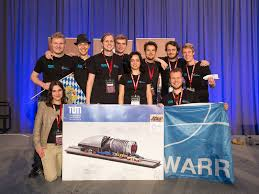
Breaking News
6.5x55 Swedish vs. 6.5 Creedmoor: The New 6.5mm Hotness
Best 7mm PRC Ammo: Hunting and Long-Distance Target Shooting
 Christmas Truce of 1914, World War I - For Sharing, For Peace
Christmas Truce of 1914, World War I - For Sharing, For Peace
Top Tech News
 EngineAI T800: Born to Disrupt! #EngineAI #robotics #newtechnology #newproduct
EngineAI T800: Born to Disrupt! #EngineAI #robotics #newtechnology #newproduct
 This Silicon Anode Breakthrough Could Mark A Turning Point For EV Batteries [Update]
This Silicon Anode Breakthrough Could Mark A Turning Point For EV Batteries [Update]
 US sought to lure Nicolás Maduro's pilot into betraying the Venezuelan leader
US sought to lure Nicolás Maduro's pilot into betraying the Venezuelan leader
 Perfect Aircrete, Kitchen Ingredients.
Perfect Aircrete, Kitchen Ingredients.
 Futuristic pixel-raising display lets you feel what's onscreen
Futuristic pixel-raising display lets you feel what's onscreen
 Cutting-Edge Facility Generates Pure Water and Hydrogen Fuel from Seawater for Mere Pennies
Cutting-Edge Facility Generates Pure Water and Hydrogen Fuel from Seawater for Mere Pennies
 This tiny dev board is packed with features for ambitious makers
This tiny dev board is packed with features for ambitious makers
 Scientists Discover Gel to Regrow Tooth Enamel
Scientists Discover Gel to Regrow Tooth Enamel
 Vitamin C and Dandelion Root Killing Cancer Cells -- as Former CDC Director Calls for COVID-19...
Vitamin C and Dandelion Root Killing Cancer Cells -- as Former CDC Director Calls for COVID-19...
 Galactic Brain: US firm plans space-based data centers, power grid to challenge China
Galactic Brain: US firm plans space-based data centers, power grid to challenge China
How Students Built the World's Fastest Hyperloop

The students spent the next 20 minutes waiting anxiously as pumps sucked nearly all the air from the tube. They were the third and final team to get a run in the last stage of Elon Musk's hyperloop competition. The only criterion for winning? Speed.
When many people hear the word hyperloop, they think it's some sort of fixed product that Musk proposed five years ago. Rather, it's more a genre of transportation than a single invention. The basic concept calls for a passenger- or cargo-packed pod inside a nearly airless tube, zooming at high speeds thanks to minimal friction and air resistance. The details—whether and how to make the pod levitate, how to propel it, what shape it should be, and so on—are anyone's guess. Musk laid out some particulars in a 2013, but the people trying to bring this concept to life treat the white paper he wrote that lay out these ideas as a starting point, not gospel.

 The State's Last Stand
The State's Last Stand


